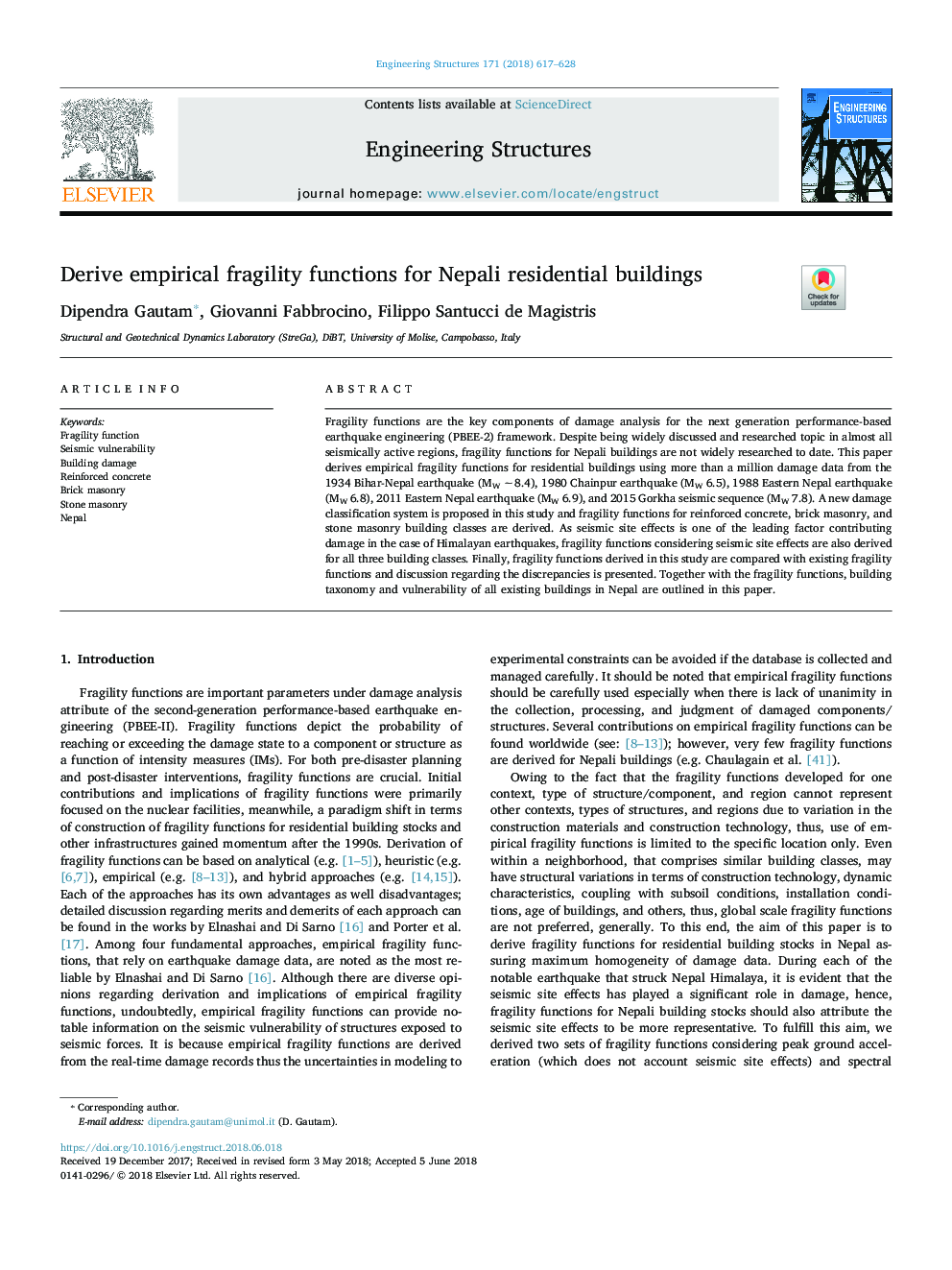| Article ID | Journal | Published Year | Pages | File Type |
|---|---|---|---|---|
| 6736390 | Engineering Structures | 2018 | 12 Pages |
Abstract
Fragility functions are the key components of damage analysis for the next generation performance-based earthquake engineering (PBEE-2) framework. Despite being widely discussed and researched topic in almost all seismically active regions, fragility functions for Nepali buildings are not widely researched to date. This paper derives empirical fragility functions for residential buildings using more than a million damage data from the 1934 Bihar-Nepal earthquake (MW â¼8.4), 1980 Chainpur earthquake (MW 6.5), 1988 Eastern Nepal earthquake (MW 6.8), 2011 Eastern Nepal earthquake (MW 6.9), and 2015 Gorkha seismic sequence (MW 7.8). A new damage classification system is proposed in this study and fragility functions for reinforced concrete, brick masonry, and stone masonry building classes are derived. As seismic site effects is one of the leading factor contributing damage in the case of Himalayan earthquakes, fragility functions considering seismic site effects are also derived for all three building classes. Finally, fragility functions derived in this study are compared with existing fragility functions and discussion regarding the discrepancies is presented. Together with the fragility functions, building taxonomy and vulnerability of all existing buildings in Nepal are outlined in this paper.
Keywords
Related Topics
Physical Sciences and Engineering
Earth and Planetary Sciences
Geotechnical Engineering and Engineering Geology
Authors
Dipendra Gautam, Giovanni Fabbrocino, Filippo Santucci de Magistris,
